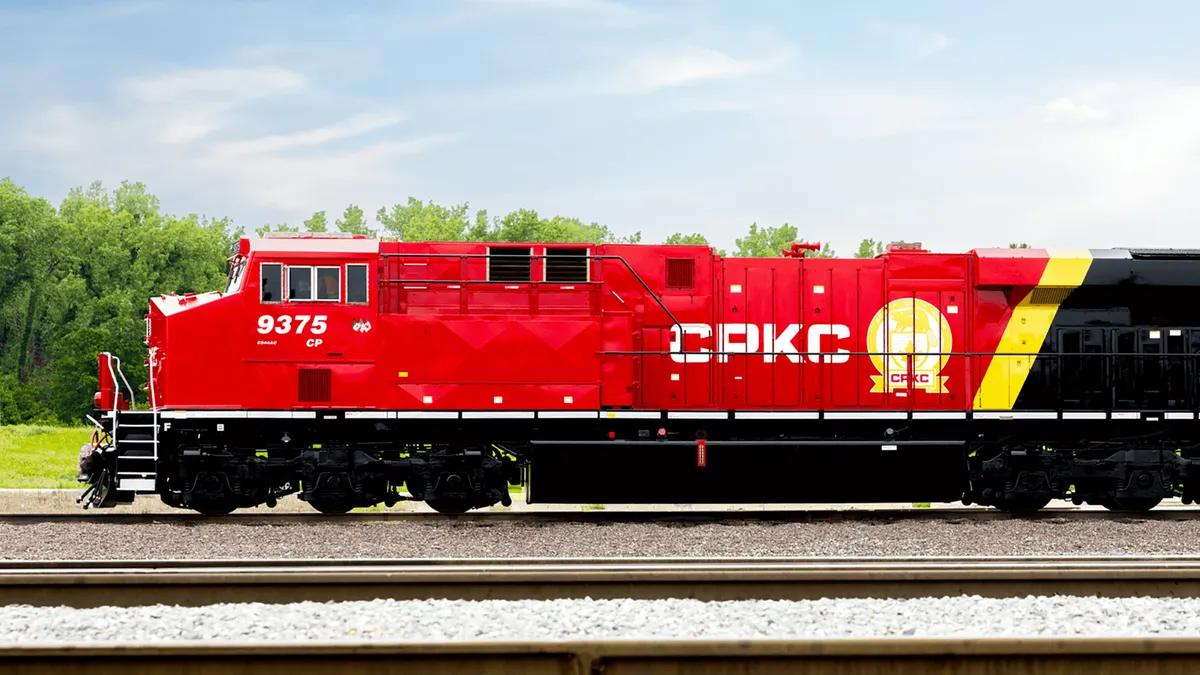Canada’s main rail carriers may have resumed operations Monday, but it could take weeks before the nation’s railroad networks are fully recovered, according to logistics experts.
In the days leading up to the Aug. 22 lockout of union workers at Canadian National Railway and Canadian Pacific Kansas City, the rail carriers implemented shipping embargoes as part of a phased shutdown to prevent hazardous cargo from being left unattended when trains stopped running.
However, after government intervention on Saturday interrupted the months-long labor strife, the rail carriers and the Teamsters Canada Rail Conference were quick to announce they would comply with the return-to-work order. But returning tons of freight to the railroads is no easy task in the wake of a work stoppage and embargoes.
“Given the shutdown was rather short, the startup is well underway,” Jason Miller, interim chair of the department of supply chain management at Michigan State University, told Supply Chain Dive in an email.
Freight that was initially part of the first wave of embargoes, such as hazardous chemicals, is the most affected, Miller said.
Citing previous Canadian rail disruptions, Scott Shannon, a VP for C.H. Robinson Worldwide who oversees the brokerage’s Canada operations, in an email said it could take up to a week for each railroad to fully reset and run smoothly again, though it could take longer to catch up with backlogged shipments.
Days before the rail strike, 35 agricultural groups sent a letter to Canada’s Prime Minister, warning that even a short work stoppage could lead to weeks of supply chain woes.
“The agricultural industries of the U.S., Canada, and Mexico are inextricably linked. A shutdown to any part of the system quickly reverberates across the entire system,” National Grain and Feed Association President and CEO Mike Seyfert said in a statement during the lockdown.
Michael Taelman, a performance improvement manager with consultancy Crowe, in an email said it may be weeks or months before Canadian National and CPKC are “fully operating back to normal” because freight backlog has been building up due to inactivity.
“For each day that a movement does not occur, the materials awaiting transport continue to accumulate on top of the additional orders needing attention,” Taelman said. “It’s an incremental effect, and it can take weeks/months to fully unwind and return to normal operations.”
Jay Cushing, an analyst with independent corporate bond research firm Gimme Credit, indicated in an investor note that “volume pressure at both railroads will be even more pronounced given the recent work stoppage” during the third quarter.
Additionally, shippers have limited rail options, Taelman said, speaking to the critical nature of the situation, especially since the Teamsters’ dispute with each railroad remains unresolved. The union indicated it will challenge the government action in court.
“I think most people understand [it] is not necessarily an operational problem, but a challenge related to human capital,” Taelman said. “I think customers know that the rail carriers are capable but are hamstrung by the labor negotiations, which every industry has faced to some extent throughout history.”
CPKC acknowledged in a statement that a full recovery of its network from the work stoppage “will take several weeks.” Executives from CPKC and Canadian National said during Q2 earnings calls in July that the labor uncertainty led to freight diversions during the quarter.
Nathan Owens contributed to this story.












